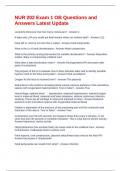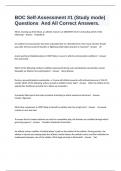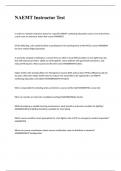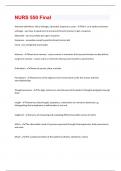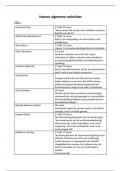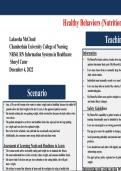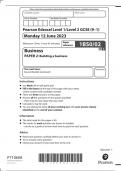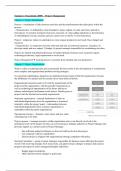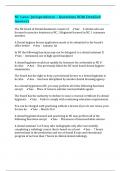Exam (elaborations)
NUR 202 Exam 1 OB Questions and Answers Latest Update
- Course
- Institution
Leopold's Maneuvar has how many maneuvars? - Answer-4 If baby was LOA you would put fetal monitor where on mothers abd? - Answer-LLQ Fetal HR is <110 for 10 mins this is called - Answer-Fetal bradycardia What is the cx of early decelerations - Answer-Head compression What is the prio...
[Show more]
